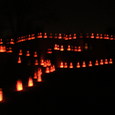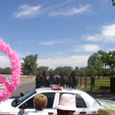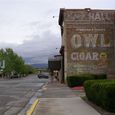« Sunday Chile Cookoff Blogging | Main | An Historic Event: Salt of the Earth at Guild Cinema »
Monday, April 24, 2006
Study Predicts Sandia Dump Will Contaminate Albuquerque’s Drinking Water
From Citizen Action New Mexico:
Contamination from a Cold War-era waste dump will reach Albuquerque’s drinking water aquifer as early as the year 2010, according to a new study conducted by Sandia National Laboratories. The dump, known as the Mixed Waste Landfill, contains an estimated 100,000 cubic ft. of radioactive and chemical waste from nuclear weapons research buried in unlined pits and trenches at Sandia.
The study conducted by Sandia, known as a “fate and transport” model, predicts the movement and releases of contaminants from the dump. The New Mexico Environment Department (NMED) ordered Sandia to conduct the study as a requirement of a permit the NMED issued to Sandia that, instead of clean up, allows Sandia to cover the dump with 3 feet of dirt and monitor the site indefinitely. The news that the dump will eventually contaminate Albuquerque’s sole source aquifer came after Ron Curry, NMED Secretary, issued a permit to Sandia to cover the waste.
Sandia’s study predicts that tetrachloroethane, a man-made chemical commonly referred to as PCE, will reach Albuquerque’s aquifer as early as the year 2010. PCE can persist in the groundwater for years, and has been classified as a “probable” human carcinogen linked with liver and kidney cancers. PCE decays and forms other chemical compounds that include trichloroethane (TCE); dichloroethane (DCE); and vinyl chloride (VC), all of which are linked to cancers of the brain, liver, stomach, lungs, prostate, cervix and endometrium.
Sue Dayton, Director for Citizen Action New Mexico, a public interest group advocating for clean up of the waste site, said that Sandia has consistently maintained it is highly unlikely that contaminants from the dump will ever reach the groundwater below.
Paul Robinson, Research Director for the Southwest Research and Information Center, who reviewed the study for Citizen Action, said, “Sandia’s study only models for the movement of one chemical (PCE) to the groundwater, even though previous investigations by Sandia have shown that at least a dozen various chemicals have escaped the dump.”
Robinson also said the study failed to model the movement of the PCE decay products, and the complete range of other metals and radioactive materials buried in the dump. Robinson’s review submitted to the NMED also cited the failure of the study to model the release and transport of radioactive contaminants through plants and burrowing animals at the dump by Sandia. Sampling efforts by Sandia have shown deer mice and vegetation living at the dump to be contaminated with radon and tritium, two radioactive materials.
Dayton added: “This new study demonstrates that contamination from the dump is inevitable and raises serious concerns about the potential for contamination from the Mixed Waste Landfill to Albuquerque’s drinking water, from new wells drilled to provide drinking water for the future residents of Mesa del Sol, and future groundwater development by Sandia’s neighbors including the Pueblo of Isleta. We are calling on Governor Richardson to step up to the plate and take action on this matter.”
For more information contact Citizen Action New Mexico: (505) 262-1862. To read Citizen Action’s comments on Sandia’s Fate and Transport Model visit the Citizen Action website at www.radfreenm.org.
April 24, 2006 at 09:04 AM in Current Affairs | Permalink
Comments
It's depressing to think that Sandia and the powers that be believe it's OK to leave the dump there, to leak into our drinking water. I guess money talks. Cheaper to leave it there and endanger our resources than to clean the dump up properly. Isn't it time for Sandia Lab to be a good citizen instead of just a user of our resources?
Posted by: Greenie | Apr 25, 2006 10:03:43 AM
A ticking time bomb, and with plans to develop Mesa del Sol coming up too.
Posted by: Nmexdem | Apr 26, 2006 3:20:48 PM









